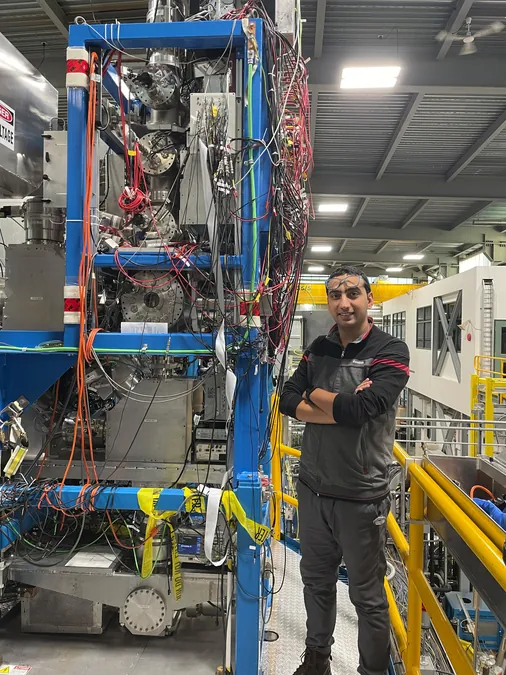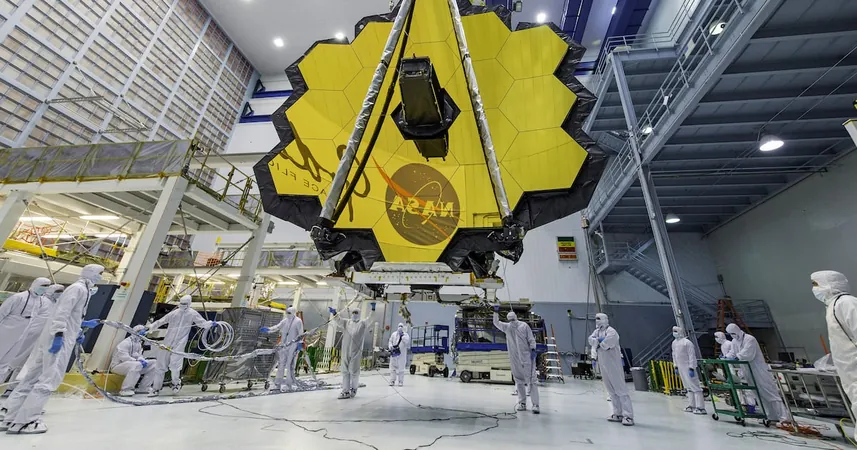
Astrophysics Breakthrough: 1.5 TB of JWST Data Now Available for All
2025-06-09
Author: Noah
A Stellar Release for Science Lovers!
NASA has just opened the vault on an astonishing 1.5 TB of data captured by the James Webb Space Telescope (JWST), giving astronomy enthusiasts and researchers alike the most expansive look into the universe ever made publicly accessible.
COSMOS Project Unveils a Goldmine of Galaxies
The Cosmic Evolution Survey (COSMOS), a collaboration between the University of California, Santa Barbara, and Rochester Institute of Technology, has unveiled a groundbreaking searchable dataset. This treasure trove includes a galaxy catalog and an interactive viewer, allowing users to explore images of specific celestial objects along with their detailed properties. It covers approximately 0.54 square degrees of the sky via the Near Infrared Camera (NIRCam) and 0.2 square degrees with the Mid Infrared Instrument (MIRI).
Making Raw Data Usable for Everyone
Previously, while the raw data was already accessible to scientists, the COSMOS-Web initiative set out to refine that data, making it more user-friendly. Jeyhan Kartaltepe, the lead researcher for the project, explained, "The raw data are public, but extensive calibration is needed to correct various imaging artifacts, ensuring that we end up with clean, usable images for actual science."
Separating Signal from Noise in Cosmic Images
Artifacts—such as the ghostly impressions sometimes left by bright stars—can muddle results. COSMOS-Web aims to sift through these complexities to serve researchers looking to understand the cosmos better.
A Veteran in Cosmic Studies
COSMOS-Web is one of approximately 100 projects that win access to the $10 billion JWST every year. The initiative focuses on studying high redshift galaxies across a relatively vast area of the universe, enabling researchers to detect elusive ancient galaxies while mapping large-scale structures.
Peeking into the Universe's Past
Observing light from distant galaxies reveals fascinating insights about their velocity and distance from Earth. As these galaxies move away from us, their light shifts toward the red end of the spectrum, a phenomenon that takes us back to an era just after the Big Bang.
Collaborating with Cutting-Edge Technology
To assemble this impressive mosaic of data, the project utilized France's state-of-the-art supercomputer, CANDIDE, at the Institut d'Astrophysique in Paris. This technological collaboration was key to processing and cataloging the significant dataset.
Unlocking Secrets of the Early Universe
Launched in 2007, the COSMOS project continues its mission to decipher a pivotal transition in the universe that occurred around 200 million years post-Big Bang. This era saw the transformation from neutral hydrogen—which blocked light—to ionized gas that allowed it to flow freely, marking a critical point in cosmic history known as reionization.
An Open Invitation for Discovery
Kartaltepe emphasized the value of sharing this database with the broader scientific community: "We are limited in our resources, but by opening this data to the world, we encourage new ideas and projects that can broaden our understanding of the universe."
Looking Ahead with Support from NASA
While the current funding from NASA’s Space Telescope Science Institute is set to conclude soon, COSMOS has plans to seek additional funding in Europe to sustain its mission.









 Brasil (PT)
Brasil (PT)
 Canada (EN)
Canada (EN)
 Chile (ES)
Chile (ES)
 Česko (CS)
Česko (CS)
 대한민국 (KO)
대한민국 (KO)
 España (ES)
España (ES)
 France (FR)
France (FR)
 Hong Kong (EN)
Hong Kong (EN)
 Italia (IT)
Italia (IT)
 日本 (JA)
日本 (JA)
 Magyarország (HU)
Magyarország (HU)
 Norge (NO)
Norge (NO)
 Polska (PL)
Polska (PL)
 Schweiz (DE)
Schweiz (DE)
 Singapore (EN)
Singapore (EN)
 Sverige (SV)
Sverige (SV)
 Suomi (FI)
Suomi (FI)
 Türkiye (TR)
Türkiye (TR)
 الإمارات العربية المتحدة (AR)
الإمارات العربية المتحدة (AR)